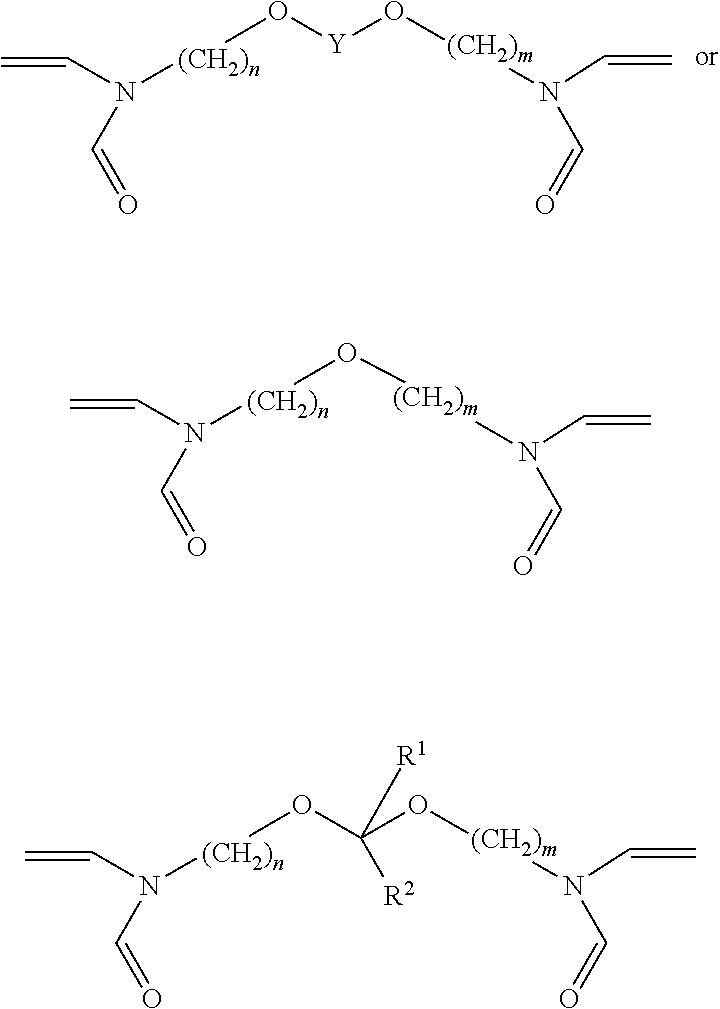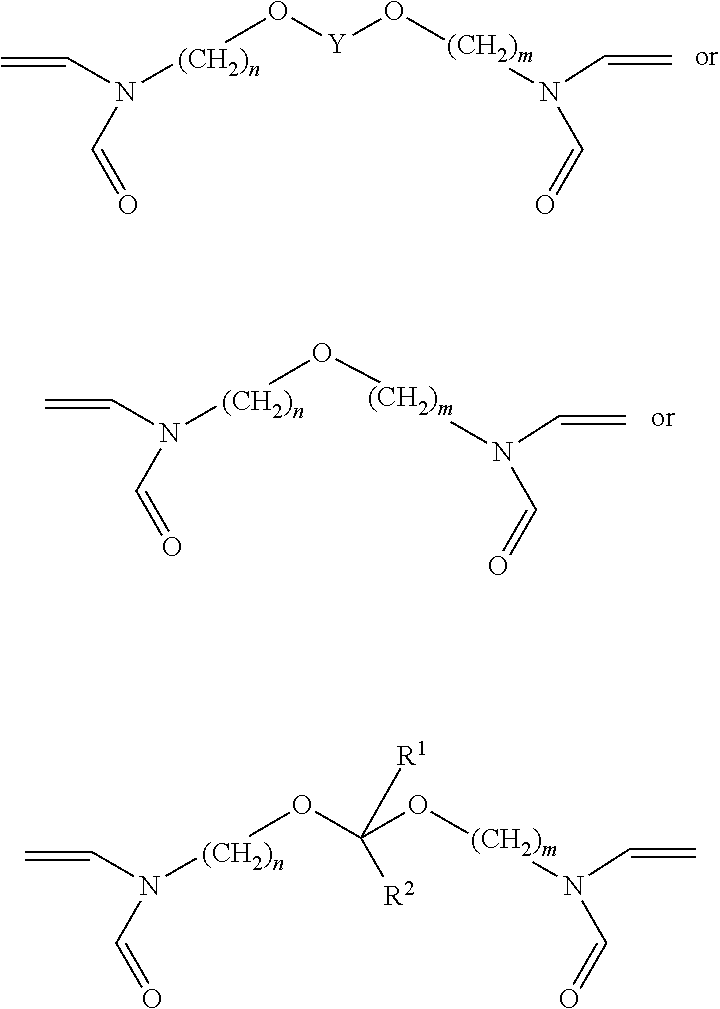Swellable polymer with anionic sites
a polymer and anionic site technology, applied in the field of crosslinked swellable polymers, can solve the problems of only temporary treatment effect of porous media with these particles, and behavior appeared to washou
- Summary
- Abstract
- Description
- Claims
- Application Information
AI Technical Summary
Benefits of technology
Problems solved by technology
Method used
Image
Examples
example 1
Prior Art
[0045]We ran a number of slim tube tests in which we injected about 1 pore volume of BRIGHTWATER® particles (NALCO®, copolymer of acrylamide and sodium AMPS crosslinked with methylene bis-acrylamide and PEG diacrylate) into 40′ slim tubes packed with sand. The sand pack was then heated (150-190° F.) to allow the polymer to pop. Afterwards, water was injected into the sand packs and the resistance to the flow of water measured. While the popped polymers initially exhibited good resistance factors, this behavior appeared to washout with additional water injection. Typically within one pore volume of water injection the Residual Resistance Factor (RRF) dropped to a number about 1-2. This behavior was observed with slim tubes which were packed with 6.7 Darcy sand as well as 1 Darcy sand. Therefore, the treatment effect of porous media with these particles was only temporary.
example 2
Invention
[0046]Since the prior art polymer is subject to washout, we propose that when combined with suitable anionic sites and further crosslinked with polyvalent metal cations or a cationic polymer, such as PEI, the resulting gel will remain resistant to washout! After the polymer reaches the target zone in the reservoir, the unstable internal crosslinkers PEG-200 or PEG-400 diacrylates hydrolyze and the particle then opens up (swells, pops). The addition of the cationic crosslinker such as Cr3+ or PEI will crosslink the expanded polymeric particles via the anionic sites, and is predicted to result in gel that is much more resistant to washout.
[0047]We injected a gelant mixture containing 0.5% anionic microparticles of the present invention along with crosslinker-loaded particles containing 100 ppm Cr(III) and 1200 ppm PEI into a 30′ long slim tube (6 sections, 5′ each) packed with 4.5 Darcy sand. The gelant was injected into the first 0.5 PV of the sandpack and then pushed slight...
PUM
| Property | Measurement | Unit |
|---|---|---|
| Fraction | aaaaa | aaaaa |
| Fraction | aaaaa | aaaaa |
| Length | aaaaa | aaaaa |
Abstract
Description
Claims
Application Information
 Login to View More
Login to View More - R&D
- Intellectual Property
- Life Sciences
- Materials
- Tech Scout
- Unparalleled Data Quality
- Higher Quality Content
- 60% Fewer Hallucinations
Browse by: Latest US Patents, China's latest patents, Technical Efficacy Thesaurus, Application Domain, Technology Topic, Popular Technical Reports.
© 2025 PatSnap. All rights reserved.Legal|Privacy policy|Modern Slavery Act Transparency Statement|Sitemap|About US| Contact US: help@patsnap.com


